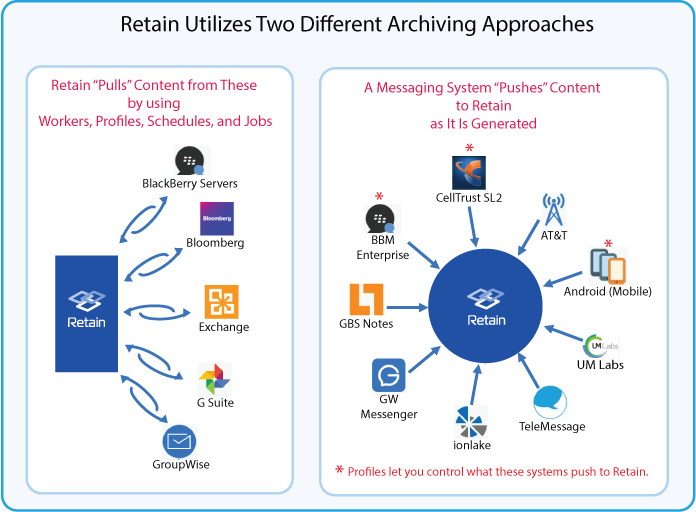1.0 Getting Started with Retain Archiving
First, Plan Your Retain Archiving System
As a best practice, we recommend that you start by creating a written plan. Obviously, this plan will evolve and expand over time, but beginning with a plan is the most effective and efficient way to ensure a successful Retain deployment.
Do the following:
-
Identify stakeholders in your organization who have a vested interest in a successful Retain deployment.
-
With the stakeholders, decide on a convenient and accessible way to propose, review, and finalize your Retain deployment plan.
-
Create your plan by doing at least the following:
-
Identify the messaging systems that Retain will service.
-
Record each system’s DNS and IP address information, physical location, administrator information, and any other information relative to the system’s future interaction with Retain.
-
Save a space to record details identified during the deployment, such as system credentials, licenses, and other information that Retain and third-party systems will require as you connect them together.
-
Determine the times when systems and network traffic are slow and best suited for archiving operations to take place. This will feed into schedule creation as proposed in Creating Schedules.
-
Articulate the scope of what needs to be archived for each system: users, groups, message types, date ranges, attachments, and so on.
-
Avoid redundant data collection.
-
Next, Match Your Messaging Systems to Retain’s Archiving methods
Retain’s archiving methods are designed to match the messaging systems being archived.
Find your messaging platforms in Figure 1-1 to determine which of Retain’s archiving models your organization requires.
Figure 1-1 Retain’s Archiving Models Match Platform Needs

|
Retain Pulls Data to Its Message Store |
Messaging System Pushes to Retain’s Message Store |
|---|---|
|
IMPORTANT:These messaging systems require one or more additional licenses to connect with Retain.
|
Where to Go from Here
-
Pull-based: For your messaging platforms that require Retain-initiated archiving, continue with
Understanding Retain Jobs.
-
Push-based: For your messaging platforms that support push-based archiving, skip to Section 3.0, Setting Up Push-Based Archiving.